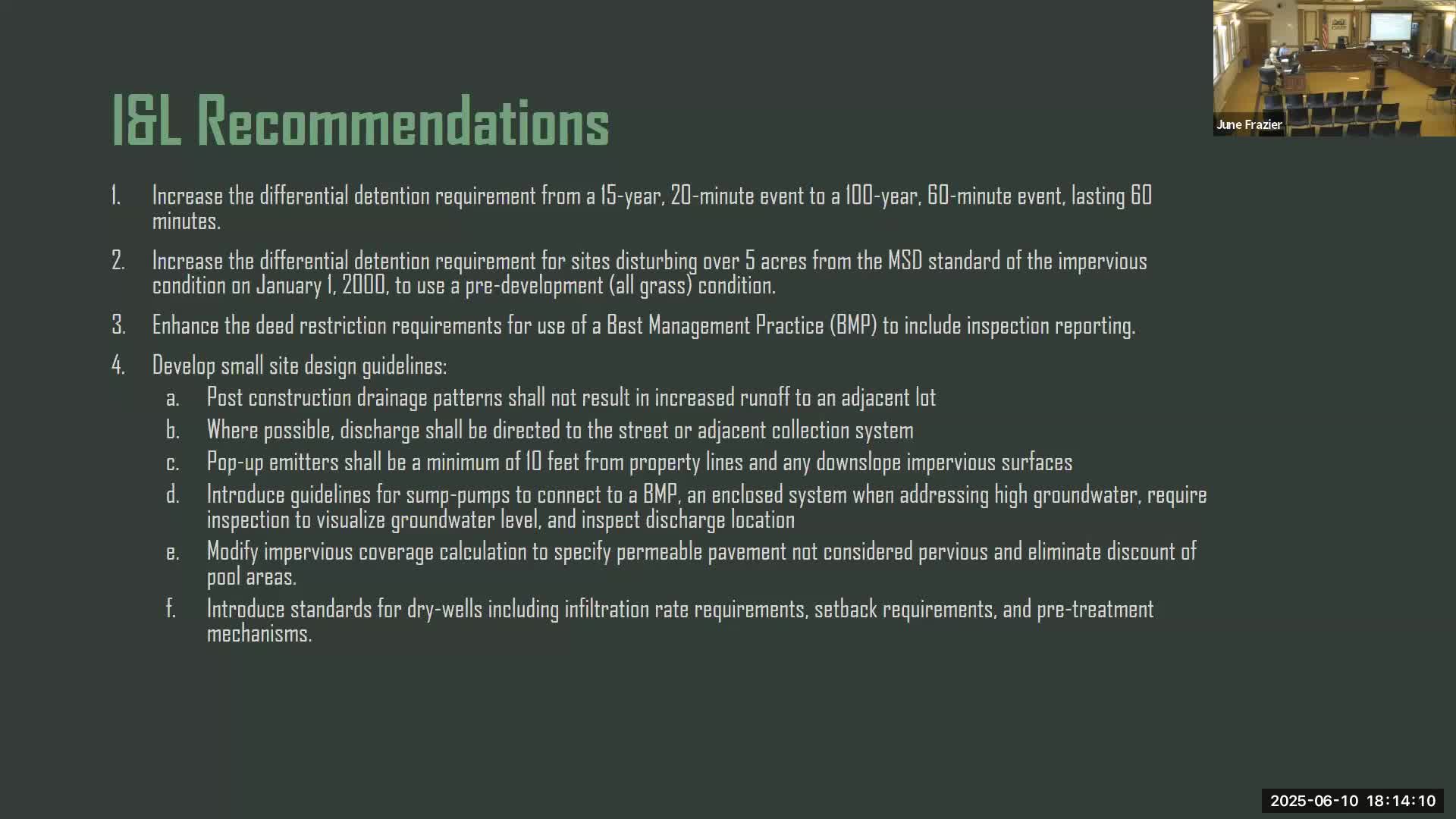City Council Considers New Regulations for Stormwater Management and Sump Pumps
June 12, 2025 | Clayton City, St. Louis County, Missouri
This article was created by AI summarizing key points discussed. AI makes mistakes, so for full details and context, please refer to the video of the full meeting. Please report any errors so we can fix them. Report an error »

In a recent meeting of the Clayton Board of Aldermen, significant discussions centered around updating stormwater management regulations to better address community concerns about flooding and water runoff. The proposed changes aim to enhance the enforcement of existing codes and introduce new guidelines that will directly impact residents' properties and public spaces.
One of the key topics was the regulation of pop-up emitters, which are devices that release water from sump pumps. Currently, these emitters must be placed at least 10 feet from property lines or any downslope impervious surfaces. However, the city has encountered challenges in enforcing this rule due to waivers issued by the Metropolitan St. Louis Sewer District (MSD). The Board discussed the need to strengthen local codes to ensure compliance and reduce the nuisance complaints related to water trickling from these emitters, which can lead to algae growth in warmer months and icy sidewalks in winter.
Another major focus was the introduction of inspection requirements for sump pumps. The Board recognized that many existing sump pumps may be pulling groundwater, contributing to continuous water flow and related issues. To mitigate this, they proposed requiring inspections to verify that sump installations do not adversely affect the groundwater table. If a potential impact is identified, homeowners would need to implement additional measures, such as installing dry wells to manage excess water underground rather than allowing it to flow over surfaces.
The meeting also addressed the calculation of impervious coverage, which is crucial for managing stormwater runoff. The Board plans to revise how impervious surfaces are defined, particularly concerning sustainable technologies like permeable pavers. This change aims to ensure that these surfaces are accurately accounted for in stormwater management strategies, eliminating discounts for pool areas that currently skew calculations.
In addition to these discussions, the Board is implementing new requirements for dry wells, including infiltration rate tests to ensure proper water absorption into the soil. This will help prevent surface runoff and improve the overall effectiveness of stormwater management systems.
These proposed changes reflect the Board's commitment to enhancing community resilience against flooding and improving the quality of life for Clayton residents. As the city moves forward with these regulations, residents can expect a more structured approach to managing stormwater and protecting their properties from the impacts of excessive water runoff.
One of the key topics was the regulation of pop-up emitters, which are devices that release water from sump pumps. Currently, these emitters must be placed at least 10 feet from property lines or any downslope impervious surfaces. However, the city has encountered challenges in enforcing this rule due to waivers issued by the Metropolitan St. Louis Sewer District (MSD). The Board discussed the need to strengthen local codes to ensure compliance and reduce the nuisance complaints related to water trickling from these emitters, which can lead to algae growth in warmer months and icy sidewalks in winter.
Another major focus was the introduction of inspection requirements for sump pumps. The Board recognized that many existing sump pumps may be pulling groundwater, contributing to continuous water flow and related issues. To mitigate this, they proposed requiring inspections to verify that sump installations do not adversely affect the groundwater table. If a potential impact is identified, homeowners would need to implement additional measures, such as installing dry wells to manage excess water underground rather than allowing it to flow over surfaces.
The meeting also addressed the calculation of impervious coverage, which is crucial for managing stormwater runoff. The Board plans to revise how impervious surfaces are defined, particularly concerning sustainable technologies like permeable pavers. This change aims to ensure that these surfaces are accurately accounted for in stormwater management strategies, eliminating discounts for pool areas that currently skew calculations.
In addition to these discussions, the Board is implementing new requirements for dry wells, including infiltration rate tests to ensure proper water absorption into the soil. This will help prevent surface runoff and improve the overall effectiveness of stormwater management systems.
These proposed changes reflect the Board's commitment to enhancing community resilience against flooding and improving the quality of life for Clayton residents. As the city moves forward with these regulations, residents can expect a more structured approach to managing stormwater and protecting their properties from the impacts of excessive water runoff.
View full meeting
This article is based on a recent meeting—watch the full video and explore the complete transcript for deeper insights into the discussion.
View full meeting
